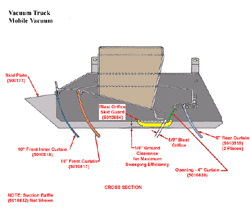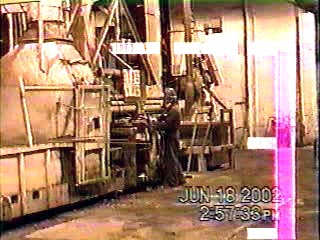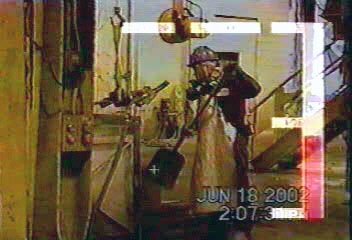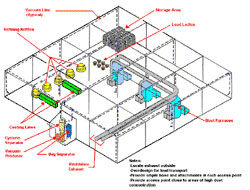Lead: Secondary Lead Smelter eTool
A rigorous housekeeping program is necessary to keep airborne lead levels as low as feasibly possible. OSHA requires the following regarding general housekeeping:


-
All surfaces must be maintained as free as practicable of accumulations of lead. [29 CFR 1910.1025(h)(1)]
-
Floors and other surfaces where lead accumulates may not be cleaned by the use of compressed air. [29 CFR 1910.1025(h)(2)(i)]
-
Shoveling, dry or wet sweeping and brushing may be used only where vacuuming or other equally effective methods have been tried and found not to be effective (Fig. 1). [29 CFR 1910.1025(h)(2)(ii)]
-
Where vacuuming methods are selected, the vacuums shall be used and emptied in a manner which minimizes the reentry of lead into the workplace. [29 CFR 1910.1025(h)(3)]

With video exposure monitoring (VEM), worker exposures to lead are monitored and recorded with a direct reading instrument. At the same time, work place activities are recorded on a video tape. The right hand bar indicates changes in total dust concentrations over time.
As the employee removes the protective gloves, the increasing red bar indicates that the employee is exposed to lead due to dispersion of lead from the surface of the improperly cleaned or stored gloves.

With video exposure monitoring (VEM), worker exposures to lead are monitored and recorded with a direct reading instrument. At the same time, work place activities are recorded on a video tape. The right hand bar indicates changes in total dust concentrations over time.
As the employee shovels the slag during cleanup and places it into the slag pot for disposal, the increasing red bar indicates that the employee is exposed because lead dust is inadequately captured when the slag is shoveled and dumped into the pot.


